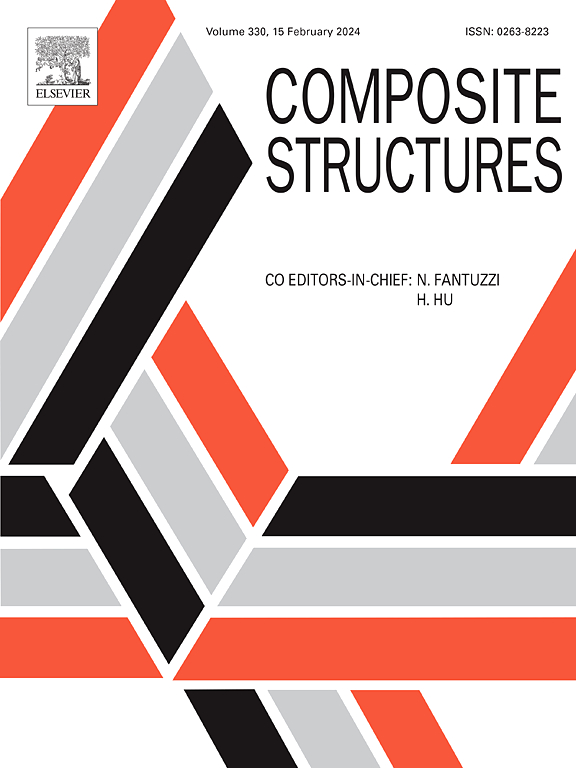Assembled suture multi-cell structures with enhanced interlocking and tailored energy absorption
IF 7.1
2区 材料科学
Q1 MATERIALS SCIENCE, COMPOSITES
引用次数: 0
Abstract
In this study, the suture structure was designed as the connection joint to improve mechanical interlocking capability and crashworthiness of assembled multi-cell structures. The failure mechanisms and mechanical properties of three suture interfaces were investigated by tensile tests. The suture interface with the best mechanical properties was selected as the connection joint for assembled multi-cell tubes. Quasi-static compression experiments showed that the multi-cell tube assembled with suture joints exhibited high synergy and effectively avoided the risk of tube splashing during compression. The specific energy absorption and crushing force efficiency of the assembled four-cell tube were increased by 65.8 % and 49.9 % compared to corresponding discrete tube, respectively. Based on the simplified super folding element theory and taking into account the variations in folding elements caused by suture joints, a theoretical model was established to predict the mean crushing force of assembled suture n × n-cell tube. The theoretical predictions were in good agreement with experimental studies. This study offered the potential for energy absorbers to on-demand customize their dimensions and crashworthiness to adapt to various collision environments.
装配缝合多细胞结构,增强联锁和量身定制的能量吸收
本研究将缝合结构设计为连接节点,以提高装配多单元结构的机械联锁能力和耐撞性。通过拉伸试验研究了三种缝合界面的破坏机理和力学性能。选择力学性能最好的缝合界面作为装配多胞管的连接接口。准静态压缩实验表明,用缝合接头组装的多细胞管具有较高的协同性,有效地避免了压缩过程中管飞溅的风险。四单元组合管的比能吸收和破碎力效率分别比分立管提高了65.8%和49.9%。基于简化的超折叠单元理论,考虑缝线接头引起的折叠单元变化,建立了预测组合缝线n × n胞管平均破碎力的理论模型。理论预测与实验研究非常吻合。这项研究为能量吸收器提供了按需定制其尺寸和耐撞性以适应各种碰撞环境的潜力。
本文章由计算机程序翻译,如有差异,请以英文原文为准。
求助全文
约1分钟内获得全文
求助全文
来源期刊

Composite Structures
工程技术-材料科学:复合
CiteScore
12.00
自引率
12.70%
发文量
1246
审稿时长
78 days
期刊介绍:
The past few decades have seen outstanding advances in the use of composite materials in structural applications. There can be little doubt that, within engineering circles, composites have revolutionised traditional design concepts and made possible an unparalleled range of new and exciting possibilities as viable materials for construction. Composite Structures, an International Journal, disseminates knowledge between users, manufacturers, designers and researchers involved in structures or structural components manufactured using composite materials.
The journal publishes papers which contribute to knowledge in the use of composite materials in engineering structures. Papers deal with design, research and development studies, experimental investigations, theoretical analysis and fabrication techniques relevant to the application of composites in load-bearing components for assemblies, ranging from individual components such as plates and shells to complete composite structures.
 求助内容:
求助内容: 应助结果提醒方式:
应助结果提醒方式:


